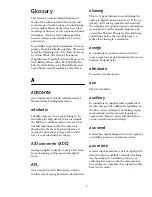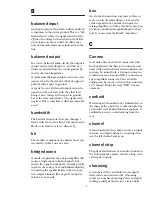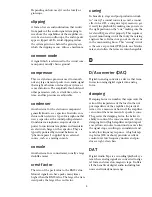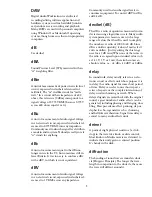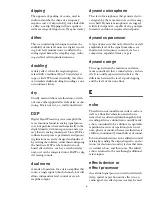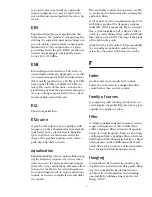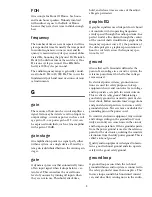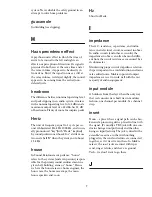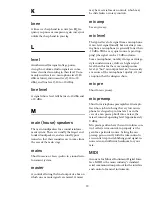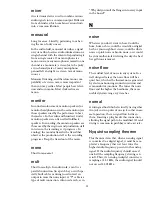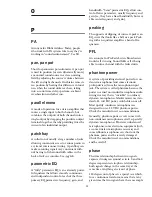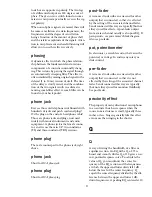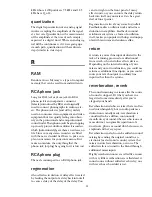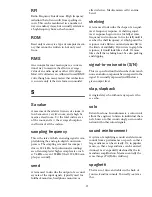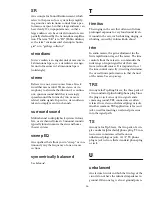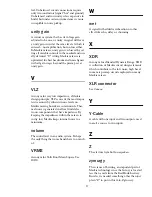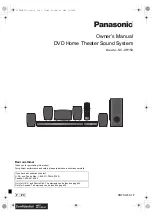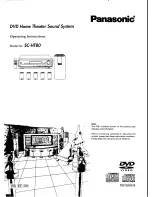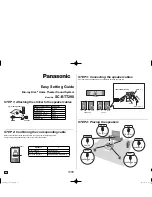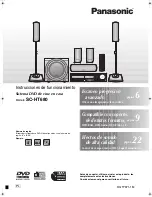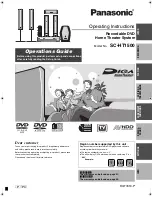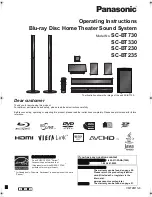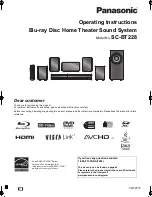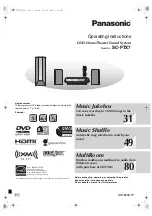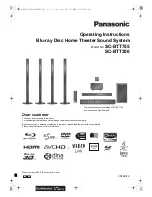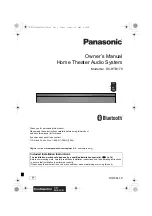
2
Glossary
This Glossary contains brief definitions of
many of the audio and electronic terms and
acronyms used in discussions of sound mixing
and recording. Many of the terms have other
meanings or nuances or very rigorous technical
definitions, which we have sidestepped here
because we figure you already have a lot on
your mind.
If you’d like to get more information, there are
plenty of useful textbooks out there. We recom-
mend the following titles:
The Audio Dictionary
by Glenn White,
Tech Terms
by Peterson &
Oppenheimer,
Handbook for Sound Engineers
by
Glen Ballou,
Mackie Mixer Book
by Rudy Tru-
bitt,
Pro Audio Reference
by Dennis Bohn, and
Sound Reinforcement Handbook
by Gary Davis.
A
ACRONYM
An acronym for A Contrived Reduction Of
Nomenclature Yielding Mnemonics
adiabatic
Literally, it means "not to pass through." In
describing the high-density foam used inside
the HR Series studio monitors, it means that
internal reflections within the cabinet are
absorbed by the foam. In physical terms, it
means the mechanical energy of the sound
wave is converted into heat energy.
A/D converter (ADC)
Analog-to-digital converter, a device that trans-
forms incoming analog signals into digital
form.
AFL
An acronym for After Fade Listen, which is
another way of saying post-fader solo function.
aliasing
This is a type of distortion caused during the
analog-to-digital conversion process. If the fre-
quency of the analog signal exceeds one-half
the sampling rate, spurious signals and harmon-
ics not present on the original signal may be
created (see Nyquist Theorem). Careful design
and filtering before the sampling stage can
reduce this aliasing to a minimum.
assign
In sound mixers, assign means to switch or
route a signal to a particular signal path or com-
bination of signal paths.
attenuate
To reduce or make quieter.
aux
Short for Auxiliary.
auxiliary
In sound mixers, supplemental equipment or
features that provide additional capabilities to
the basic system. Examples of auxiliary equip-
ment include: serial processors (equalizers,
compressors, limiters, gates) and parallel pro-
cessors (reverberation and delay).
aux send
A mixer bus output designed to send a signal to
an auxiliary processor or monitor system.
aux return
A mixer input (sometimes a pair of inputs) with
limited control capabilities, intended for bring-
ing the output of an auxiliary processor or
other line-level source into the main mix bus.
Aux returns can sometimes be assigned to other
buses in the mixer.


